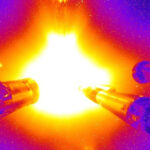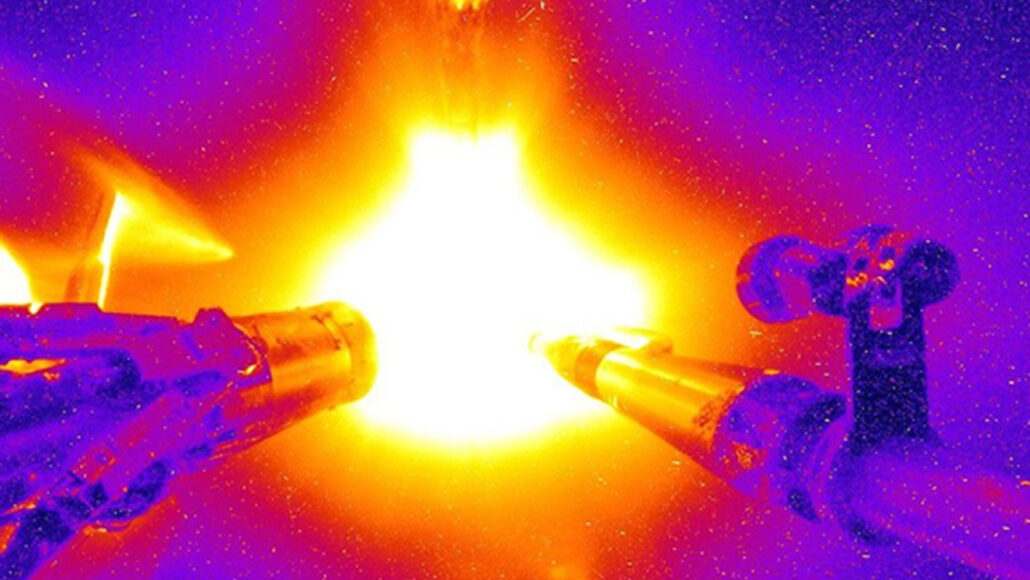Nuclear fusion achieved in California. Now it is a question of stabilizing it


An important discovery in the field of nuclear fusion was confirmed a year after it was reached in a laboratory in California.
As Newsweek reports, researchers from Lawrence Livermore National Laboratory's (LLNL) National Ignition Facility (NIF) recorded the first case of nuclear fusion ignition on August 8, 2021, the results of which have now been published in three reviewed articles. academic.
Nuclear fusion is the process that powers the sun and other stars: heavy hydrogen atoms collide with such force that they fuse together to form a helium atom, releasing large amounts of energy as a byproduct. Once the hydrogen plasma "ignites", the fusion reaction feeds itself and the melts themselves produce enough energy to maintain the temperature without external heating.
Ignition during a fusion reaction essentially means that the reaction itself has produced enough energy to be self-sufficient, which would be needed in using fusion to generate electricity. It would be the first step for a commercial nuclear fusion reactor that would make it possible to completely withdraw from fossil fuels.
The problem with fusion energy at the moment is that we don't have the technical skills to harness it. That is, once. Scientists around the world are currently working to solve these problems.
In this latest LLNL milestone, researchers recorded an energy yield of over 1.3 megajoules (MJ) in just nanoseconds. For reference, one MJ is the kinetic energy of a one-ton mass moving at 100 miles per hour, so that's an impressive amount of energy, even if developed in a very short span of time.
The problem with fusion energy at the moment is that we don't have the technical skills to harness it. Scientists around the world are currently working to solve these problems.
In this latest LLNL milestone, researchers recorded an energy yield of over 1.3 megajoules (MJ) in just nanoseconds. For reference, one MJ is the kinetic energy of a one-ton mass moving at 150 km per hour.
"The record hit was a major scientific advance in fusion research, establishing that ignition of fusion in the laboratory is possible at the NIF," said Omar Hurricane, chief scientist of the LLNL's inertial confinement fusion program, in a press release
"Achieving the necessary conditions for ignition is a long-standing goal for all research on inertial confinement fusion and opens the door to a new experimental regime in which self-heating of alpha particles overcomes all plasma cooling mechanisms. of merger ".
In the experiments conducted to achieve this ignition result, the researchers heat and compress a central "hot spot" of deuterium-tritium-based fuel (hydrogen atoms with one and two neutrons, respectively) using a surrounding dense piston, also based on deuterium-tritium, creating a super hot and super pressurized hydrogen plasma. The machinery that produces this effect is called Tokamak.
"Ignition occurs when the heating due to the absorption of the α particles [two protons and two neutrons closely linked to each other] created in the fusion process overcomes the loss mechanisms of the system for a certain period of time," said the authors. in an article that publishes the results in Physical Review E.
The problem now is to be able to repeat this experiment in a controlled way over time and, above all, to use the energy produced to transform it into electricity. Not an easy step.

Thanks to our Telegram channel you can stay updated on the publication of new articles of Economic Scenarios.
The article Nuclear fusion reached in California. Now it is a question of stabilizing it comes from ScenariEconomici.it .
This is a machine translation of a post published on Scenari Economici at the URL https://scenarieconomici.it/fusione-nucleare-raggiunta-in-california-ora-si-tratta-di-stabilizzarla/ on Sat, 13 Aug 2022 18:44:00 +0000.
